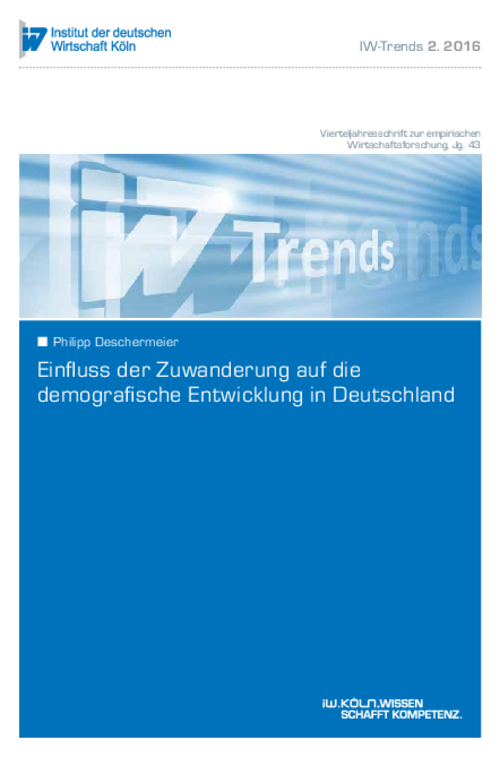Up-to-date projections of population development are relevant for many economic issues. Reflecting this, the Cologne Institute for Economic Research’s stochastic population forecast incorporates Germany’s record immigration in 2015 and the likelihood of high net immigration of some 850,000 in 2016. Based on these assumptions, by 2035 the population can be expected to have reached a total of 83.1 million, an increase of around 1.2 million. In the long run net immigration will fall again to 218,000 persons. However, this population increase will not prevent the ageing of German society, and the challenges of demographic transition – in the labour market and the social security systems, for example – will remain acute.

The Influence of Immigration on Demographic Developments in Germany
IW-Trends


Philipp Deschermeier: Einfluss der Zuwanderung auf die demografische Entwicklung in Deutschland
IW-Trends

More on the topic

Securing skilled workers through immigration to universities
Against the backdrop of demographic change, Germany is increasingly dependent on skilled labour from abroad to secure growth and prosperity.
IW
Record immigration not only due to flight from Ukraine
In 2022, more people immigrated to Germany than ever before in the history of the Federal Republic. Around 1.46 million more people moved here than left the country, which is more than a quarter more than the previous record of 1.14 million from 2015.
IW